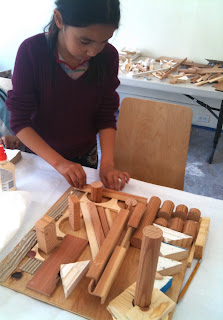







We're back! And we're at it again.
Our latest series of projects at FMAA took us along the silk road to learn about the art of Italy, Turkey, India, Tibet and China, to name a few. Marco Polo and Kublai Khan flanked the beginning and end of our adventure as students learned about the largest empire in the history of world.
We began class making pottery and Iznik tiles inspired by Turkey, then traveled along to India where real henna designs and watercolors were explored. In Tibet we studied the art of making pastel mandalas and created drawings that envisioned a greener, healthier planet.
Ending in China, students painted on silk while learning about harvesting silk from silk worms and the intricate skill of painting on this delicate fabric.
Come visit us on Thursdays from 4pm - 5:30pm or on Sundays from 10am -1pm. You are also welcome to visit our website at Flying Machine Art Academy.
Have any questions? Please email mollyleith@me.com or call 510-847-6348.
Happy New Year!!
Molly, Corby and Audrey Leith







































